Far from standardised hotels and B&Bs, Britain is home to a world of unusual places to stay that offer a unique place to rest your head while providing an interesting travel tale or two
Cornwall may exude boutique houses and cosy cottages but for a night inspired by the Pharaohs themselves, the Egyptian House, in the centre of Penzance, West Cornwall, makes for one of Britain’s quirkiest stays.
This beautifully preserved example of Egyptian Revival architecture – a somewhat rare style inspired by Napoleon’s late 18th-century campaigns in Egypt – was built in 1835 by mineralogist and bookseller John Lavin and includes a grand façade with traditional pylon and lotus bud capitals. The design is reminiscent of the famed 1812 Egyptian Hall in London’s Piccadilly that was sadly demolished in 1905, and is often attributed to Plymouth architect John Foulston, although there is little to no evidence to validate this.
The exotic exterior of the Grade I-listed building, which interestingly combines two small shopfronts into one, was used by Lavin to lure customers in to buy fossils and minerals – some brought back by overseas explorers but many found by local Cornish miners working in the area – as well as maps, guides and stationery. The Lavin family sold the building in the early 20th century and it became dilapidated over the ensuing years before being rescued by The Landmark Trust in 1968. Renovated in 1970 and returned to its former grandeur, the house has been converted into three compact self-catered apartments, sleeping either 3 or 4, with the top-floor apartment including a view over the chimney pots to Mount’s Bay. Although the interiors are not as rich as the exterior, the apartments do make great bases for exploring the historic port town of Penzance with its beautiful beaches, markets, 1930s Art Deco lido – one of Britain’s last remaining examples – and the island fortress St Michael’s Mount.
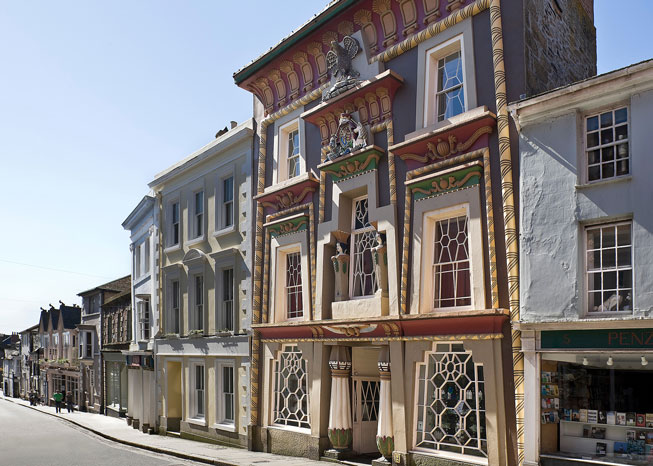
For a truly lavish experience, The Witchery by the Castle on Edinburgh’s Royal Mile should not disappoint. The rather unassuming 16th-century building by the gates to Edinburgh Castle was originally built for merchant Thomas Lowthian in 1595 and the doorway still bears his initials and motto ‘O Lord in thee is all my traist’. Rather darkly named after the hundreds of witches burnt at the stake on Castlehill during the 16th and 17th centuries, the multi award-winning restaurant, which first opened on Halloween in 1979, is now lauded as destination dining at its best with its delectable food and candle-lit dining room.
In more recent years, nine luxurious suites have been added upstairs in the adjacent 17th-century Sempill’s Court and continue the indulgent Gothic-style of the restaurant. The suites are opulence at its finest. Each room is uniquely decorated with plush interiors featuring rich antique furnishings, huge four-poster beds lavishly draped with embroidered velvet, gilded ceilings, intricate tapestries, wood-panelling, marble floors and roll-top baths built for two. The ultimate in decadent escapes, guests receive a bottle of Champagne on arrival and breakfast hampers delivered each morning.
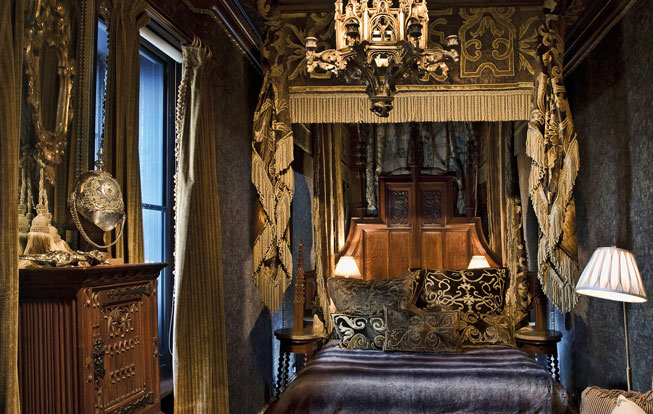
Step back in time to the golden age of railway travel at The Old Railway Station in Petworth, West Sussex. The derelict site – once considered Britain’s most beautiful railway station – was lovingly transformed into a glorious bed and breakfast in 1995 and is the ideal spot to access nearby National Trust properties Uppark House and Petworth House, which both date from the 17th century.
Built in 1892 at the behest of the then Prince of Wales, who would later become King Edward VII, so he could travel to Goodwood for the horseracing, both the station and Petworth line (which had been opened some years earlier) were very rarely used. Located on the branch line between Pulborough and Midhurst in the middle of the West Sussex countryside, the line was eventually closed in 1966 and the disused railway track replaced with a garden.
The wooden station has been completely overhauled with the waiting room and parcels office now the reception area, and the upstairs area converted into two large suites. And while the beautiful station is one draw, for an ever-unique stay, a night in one of the four Edwardian train carriages is a must. The wooden Pullman carriages, the oldest dating from 1912, have been converted into four luxury suites and retain their original brown-and-cream livery, mahogany interiors and windows, and feature large, comfy beds.
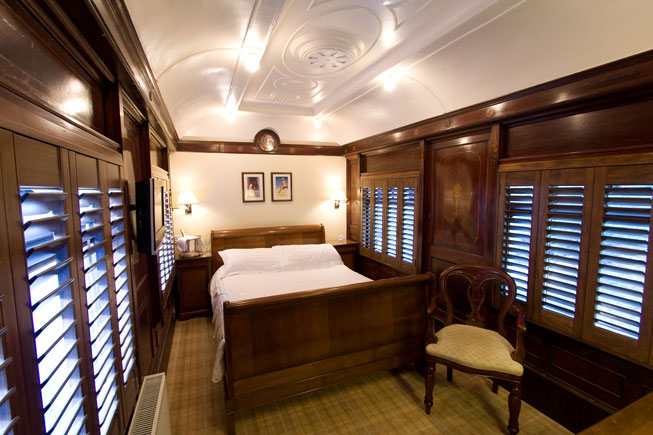
The unusually short West Usk Lighthouse, situated between Newport and Cardiff and overlooking the River Usk and the Bristol Channel, provides an intimate stay just over two hours’ drive from London. Built in 1821 by the Scottish architect James Walker, the once fully operational lighthouse was decommissioned in 1922, when the property became a family home, before being used as a look-out post during WWII. In 1987 the lighthouse was restored into the sweet B&B that it is today.
Decked out in maritime memorabilia, the Grade II-listed building now features four comfortable wedge-shaped rooms that, unusually due to the large circumference of the building, are all contained within the lighthouse. Found at the end of a long stony drive, the lighthouse sits snuggly against the clifftop with lovely sea views.
Fans of Doctor Who, will love the Dalek in the entrance hall downstairs and the Tardis on the roof next to the hot tub. And if you’re keen for a little adventure, West Usk is a great spot to take in some of the Pembrokeshire Coast Path – the rugged clifftop walk that hugs 186 miles of coastline from St Dogmaels in the north to Amroth in the south.
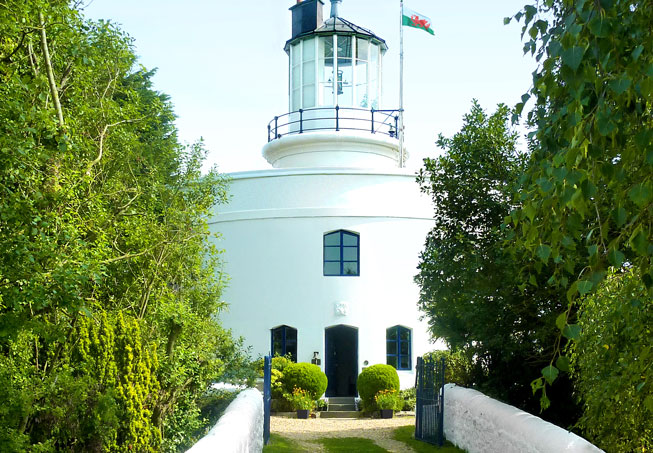
The archipelago of the Isles of Scilly, to the southwest of Cornwall, is a truly beautiful place to explore, and if you fancy a night in an original Elizabethan fortress, then family-run Star Castle Hotel, on the west of St Mary’s, is ideal.
Commissioned by Queen Elizabeth I in 1593, the castle was built as a military outpost during the Anglo-Spanish War to strengthen the island’s defences against continued Spanish raids. Today it is one of less than 10 recorded fortifications that survive from the period, and history fans will enjoy finding the plaque in an upper room of the castle that still bears the initials ‘ER’ for Queen Elizabeth I herself.
Named after the unusual outer wall shape, which comes from the eight-pointed star plan of the ramparts, Star Castle Hotel is a character-filled Grade I-listed castle set among 4 acres of secluded gardens. Guests can opt to stay in one of the contemporary suites set outside the starred walls or in one of the small selection of rooms in the original 16th-century fortress, complete with creaky staircases and furniture dating from the Jacobean period. With breathtaking views over the sand-fringed coastline, two restaurants and a dungeon bar, it’s a great base for exploring the islands.
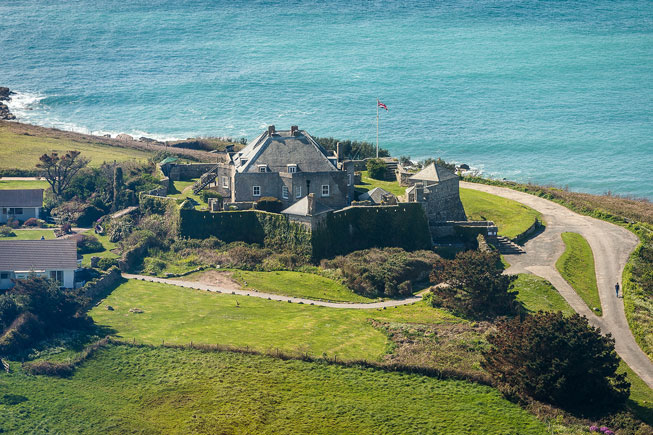
Known as the Garden of England, Kent with its many stately homes and castles has no end of attractions and for a truly unusual night for two, the early 19th-century grain mill, Old Smock Mill in Benenden, is spot on. Exquisitely restored in 2011, the smock mill, a design of mill built using a wooden framework rather than masonry, is sadly still missing its rotted sails (locally known as sweeps) and cap, however a request for funding is hoping to soon reinstate the building to its full former glory.
Operational until the Second World War, when it was used as a gunner’s lookout, the three-storey mill now features: a kitchen and living area with fireplace on the meal floor, where the ground grain would have been processed; a French-style bedroom
on the second floor or stone floor, so called because this is where the millstones were housed; and a huge bathroom on the third floor or dust floor, reached by a spiral oak staircase. Views across the beautiful Kent countryside complete this charming self-contained accommodation
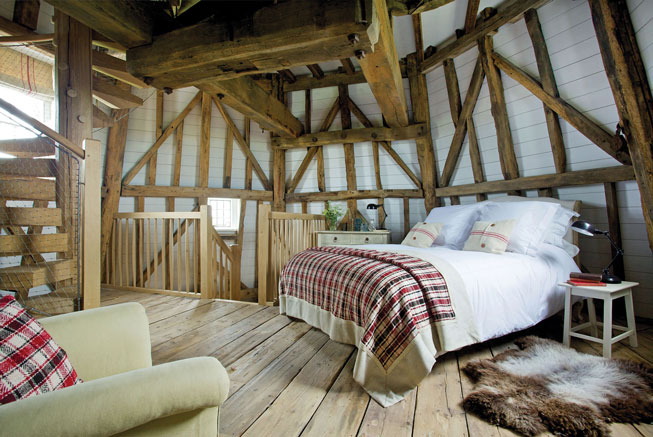





 © 2024
© 2024